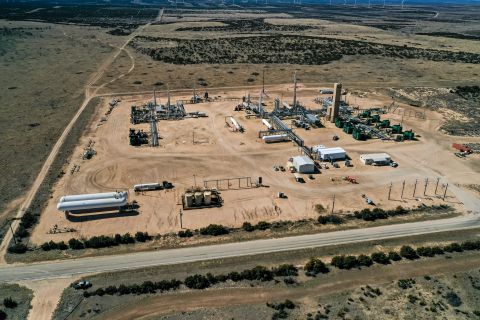
Despite being practical for deepwater developments, having versatile mooring systems and exhibiting ease in relocating to other fields, the current price environment has not left the FPSO market unscathed.
So far, only three contracts—approximately valued at a combined $1.5 billion—have been awarded in 2015, according to the energy consultancy Douglas-Westwood (DW).
“By comparison, in the first half of 2014 there were six orders and crucially, the value of those six was 528% higher than the three this year—demonstrating the lack of high capex orders in the current low oil price environment,” DW said June 22 in its weekly market report.
But what is being experienced today is not indicative of what is to come in the long term.
“Much of the ‘easy’ oil, in shallow water, easy to access reservoirs, has been developed. This leaves operators with no choice but to develop more difficult, deepwater or marginal fields,” DW’s Ben Wilby told Hart Energy. “The growth of subsea technology has also been a major help here, and FPSOs (or other floating solutions) tend to be used when subsea production methods are used.”
The observation came as the oil and gas sector continues to cope with and adjust to having more hydrocarbon resources than what the world is using. A growing wealth of oil and gas, mainly from more onshore production from U.S. unconventional plays with rising production from Saudi Arabia, have contributed to the world’s bountiful supplies and lower oil prices. In turn, this has impacted budgets and spending onshore and offshore.
First-half 2014 contracts included a $4 billion contract for two converted turret-moored FPSO units awarded to Saipem for the Total-operated Kaombo Field offshore Angola. In addition, two newbuild contracts worth more than $1 billion each were awarded during that period—both for the South Pars Field offshore Iran.
Contracts awarded during first-half 2015 include:
- A conversion for the Sankofa-Gye Nyame development offshore Ghana. Yinson Holdings Berhad was awarded the $2.5 billion contract to supply a leased FPSO vessel for Eni’s $6 billion development, Offshore Cape Three Points, in the Tano Basin.
- A small conversion for the South Pars Field offshore Iran. Petroiran Development Co. Ltd. signed a contract for an FPSO unit to exploit oil layers of the gas field, according to Iran Front Page, which cited news agency Shana.ir.
- An upgrade for redevelopment of the Salawati Field offshore Indonesia.
The drop in the value of contracts shows the caution of operators as they await a recovery in oil prices before pursuing major projects, DW noted, adding that the decline in orders could stretch well into 2016.
“Many awards have been pushed into 2016, while Petrobras is rumored to be considering cancelling two topside contracts for FPSOs planned on the Buzios Field,” DW said in the release. “Douglas-Westwood forecasts that four more awards are likely this year.”
These are for the Ayatsil field (Mexico), Madura MDA/MBH development (Malaysia), Mariscal Sucre project (Venezuela) and Cameia field (Angola), Wilby said.
Still, the long-term forecast is positive for FPSO units.
Compared to a fixed platform, a floating solution is cheaper and more practical for water depths of more than 300 m, Wilby said. Plus, FPSO units can be quickly disconnected from a field during inclement weather such as hurricanes and returned to the field relatively quickly when weather conditions improve.
“FPSO solutions will be vital for the development of oil and gas fields in deeper waters as well as for marginal fields in mature regions,” the consultancy said. DW, which forecasts that $60 billion worth of FPSOs will be installed by year-end 2019, is tracking more than 130 potential future deployments worldwide.
“The ‘golden triangle’ of West Africa, Brazil and the Gulf of Mexico will continue to see a lot of expenditure and will probably continue to lead installations and expenditure,” he added. “Other areas such as Asia and Europe will continue to see installations while the Leviathan (Israel) and Aphrodite (Cyprus) gas fields demonstrate another area where FPSOs will be valuable assets going forward.”
Contact the author, Velda Addison, at vaddison@hartenergy.com.
Recommended Reading
Midstream M&A Adjusts After E&Ps’ Rampant Permian Consolidation
2024-10-18 - Scott Brown, CEO of the Midland Basin’s Canes Midstream, said he believes the Permian Basin still has plenty of runway for growth and development.
Post Oak-backed Quantent Closes Haynesville Deal in North Louisiana
2024-09-09 - Quantent Energy Partners’ initial Haynesville Shale acquisition comes as Post Oak Energy Capital closes an equity commitment for the E&P.
Analyst: Is Jerry Jones Making a Run to Take Comstock Private?
2024-09-20 - After buying more than 13.4 million Comstock shares in August, analysts wonder if Dallas Cowboys owner Jerry Jones might split the tackles and run downhill toward a go-private buyout of the Haynesville Shale gas producer.
Aethon, Murphy Refinance Debt as Fed Slashes Interest Rates
2024-09-20 - The E&Ps expect to issue new notes toward redeeming a combined $1.6 billion of existing debt, while the debt-pricing guide—the Fed funds rate—was cut on Sept. 18 from 5.5% to 5%.
Dividends Declared Sept.16 through Sept. 26
2024-09-27 - Here is a compilation of dividends declared from select upstream, midstream and service and supply companies.
Comments
Add new comment
This conversation is moderated according to Hart Energy community rules. Please read the rules before joining the discussion. If you’re experiencing any technical problems, please contact our customer care team.





